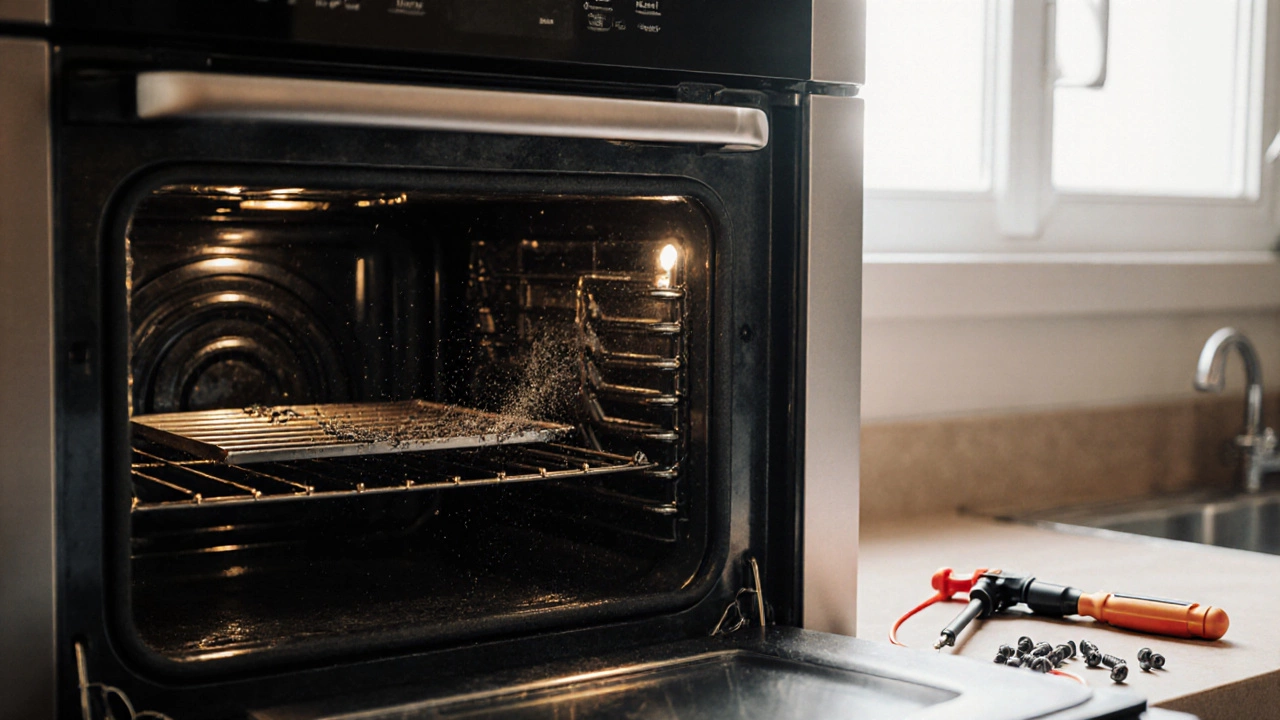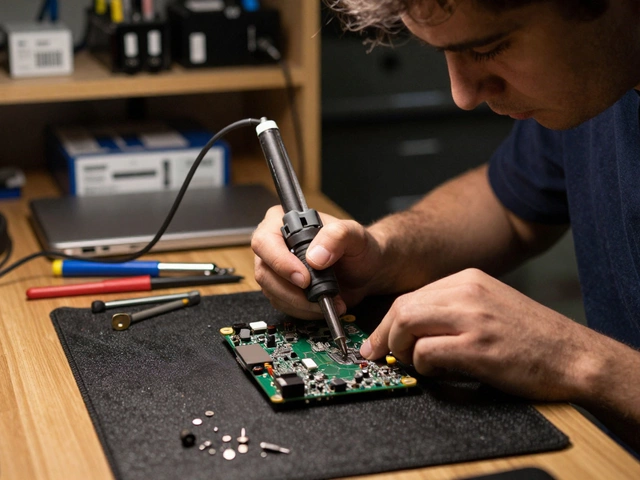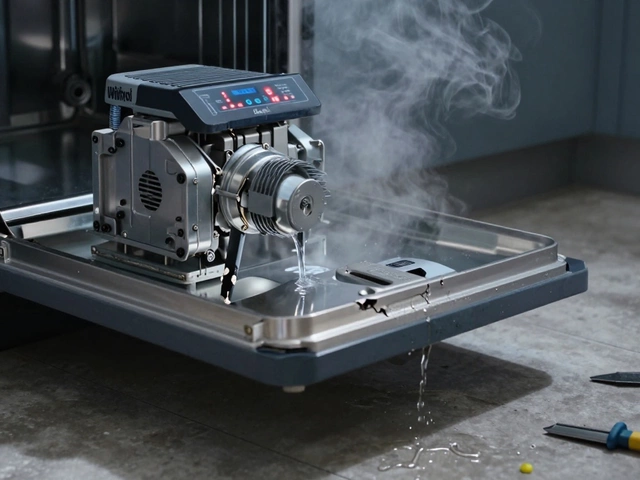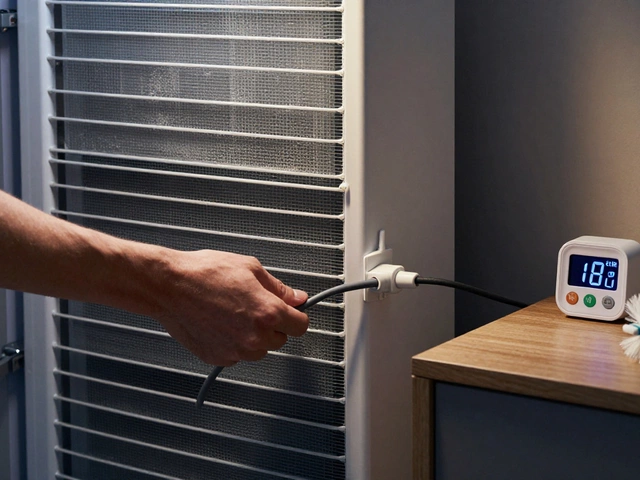Oven Repair vs Replacement Calculator
Your Oven Details
How It Works
This calculator compares repair costs against potential savings from a new oven. It considers your oven's age, repair cost, and annual energy usage to determine whether repair or replacement makes financial sense.
Key factors:
- Repairs on ovens over 10 years old often exceed 50% of new oven cost
- New ovens use 15-25% less energy than models from 2010
- Most ovens last 10-15 years with proper maintenance
Recommendation
Repair Cost: $
Energy Savings: $ per year
Payback Period: years
Most people assume fixing an oven is like replacing a lightbulb-simple, quick, and something you can do on a Saturday afternoon. But here’s the truth: electric ovens are rarely easy to fix, even for experienced DIYers. If your oven won’t heat, the display is dead, or it’s cycling on and off randomly, you’re not alone. But before you call a technician or buy a new one, let’s cut through the noise and show you what’s actually going on inside-and whether you can handle it yourself.
Why Most Oven Problems Aren’t Simple
Electric ovens have three core systems that fail: heating elements, thermostats, and control boards. Each one behaves differently when broken, and each requires a different level of skill to diagnose. A faulty heating element is the most common issue-it’s visible, easy to test, and often replaceable. But if you’ve already checked that and it still doesn’t work, you’re likely dealing with something deeper.Here’s what most people miss: the problem isn’t always the part that’s broken. Sometimes the thermostat is fine, but the control board isn’t sending power to it. Or the door switch is stuck, which prevents the oven from turning on even if everything else works. These aren’t obvious. You can’t see them. You can’t smell them. And they don’t make noise when they fail.
What You Can Actually Fix Yourself
There are three fixes most homeowners can safely do without tools beyond a screwdriver and a multimeter:- Replace the bake or broil element-If the bottom or top coil is visibly cracked, blistered, or has a gap, it’s dead. Unplug the oven, remove the screws holding the element in place, disconnect the wires, and swap it with a new one. Parts cost $25-$60. This fixes about 40% of heating issues.
- Check the door switch-If the oven light stays on when the door is closed, or the oven won’t turn on at all, the door switch might be stuck. It’s a small plastic button near the door hinge. You can test it with a multimeter for continuity. If it reads open, replace it for under $15.
- Reset the circuit breaker-Ovens draw 240 volts. If the breaker tripped, it won’t show up as a blown fuse. Go to your panel, find the double-pole breaker labeled “Oven” or “Range,” and flip it off and back on. This solves 15% of no-power cases.
These are the only repairs with a high success rate for non-professionals. Everything else requires more than basic tools-and more risk.
What You Shouldn’t Try (And Why)
The control board is the brain of the oven. It manages temperature, timing, and power distribution. If it’s faulty, the oven might display error codes like “F1,” “F3,” or “ERR.” But here’s the catch: control boards don’t always fail on their own. A bad temperature sensor or wiring short can fry the board. If you replace the board without checking the sensor, you’ll just burn through another $200 part.Temperature sensors are another trap. They look like thin metal rods inside the oven. If they’re off by even 20 degrees, the oven won’t heat properly. Testing them requires a multimeter and knowing the exact resistance values at room temperature (usually 1000-1100 ohms). If you guess wrong, you’ll replace a good sensor and still have the problem.
And don’t touch the high-voltage wiring unless you’ve been trained. Even when unplugged, capacitors in the control panel can hold a charge for hours. One mistake and you’re looking at serious injury-or worse.

When to Call a Pro
You should call a technician if:- The oven displays error codes you can’t look up
- Only part of the oven works (e.g., broil works but bake doesn’t)
- You’ve replaced the element and door switch and it still doesn’t heat
- The display is blank or flickering
- You smell burning plastic or see scorch marks near the control panel
Professional repair techs carry diagnostic tools that test voltage at every point in the circuit. They know which models have common failures-like Frigidaire’s faulty relay boards or Whirlpool’s temperature sensor drift. They also have access to manufacturer-specific firmware updates and calibration tools you don’t.
In Vancouver, where winters are harsh and ovens get heavy use, many repair shops see the same models year after year. They know which parts fail early and which brands are worth repairing versus replacing.
Costs vs. Replacement: The Real Math
A typical oven repair runs $150-$300, including parts and labor. But here’s what most people don’t realize: if your oven is over 10 years old, repair costs often hit 50% of a new unit’s price. That’s the tipping point.For example:
| Condition | Repair Cost | New Oven Cost | Recommendation |
|---|---|---|---|
| Under 5 years old, simple fix (element or switch) | $100-$180 | $600-$1,200 | Repair |
| 5-10 years old, control board or sensor | $250-$400 | $700-$1,500 | Consider repair if energy-efficient |
| Over 10 years old, any major component | $300+ | $600-$1,800 | Replace |
Newer ovens use 15-25% less energy than models from 2010. If you’re paying $120 a year to run your oven, upgrading could save you $20-$30 annually. That adds up over time.

Common Myths About Oven Repair
- Myth: “If it heats up sometimes, it’s fine.”
Truth: Intermittent heating means the thermostat or relay is failing. It won’t get better-it’ll get worse. - Myth: “All ovens are the same inside.”
Truth: A GE oven’s control board is completely different from a Bosch’s. Parts aren’t interchangeable. - Myth: “You can fix it with YouTube.”
Truth: Many videos skip safety steps, misidentify parts, or show models that don’t match yours. A video showing a 2018 Samsung repair won’t help you with a 2009 Kenmore.
How to Avoid Future Problems
Prevention costs less than repair:- Don’t use oven cleaner on the control panel or seals. It eats plastic and corrodes contacts.
- Wipe spills immediately. Sugary spills bake onto the element and cause uneven heating.
- Check the door seal yearly. If you can see light through it when closed, replace the gasket ($20-$40).
- Don’t overload the oven. Heavy pans strain the heating system.
Also, keep your model number handy. Most people lose it after the first year. It’s usually on a sticker inside the door frame or on the back panel. Write it down and store it in your phone.
Can I fix my electric oven without any tools?
Only in rare cases. You can reset the circuit breaker without tools, and you can visually inspect the heating elements for cracks. But testing voltage, checking continuity, or replacing parts requires a screwdriver and a multimeter. If you don’t have these, it’s safer to call a professional.
How long does an electric oven usually last?
Most electric ovens last between 10 and 15 years with normal use. High-end models with better insulation and components can go up to 20 years. But if you use yours daily for baking, roasting, and broiling, expect the lifespan to be closer to 10. Replacing the heating element every few years won’t extend the life of the control board or wiring.
Is it worth repairing a 12-year-old oven?
Usually not. At 12 years, your oven is past its prime. Even if the repair costs $200, you’re paying 30-40% of a new unit’s price for a system that’s already worn out. Newer models are more energy-efficient, safer, and come with better warranties. Unless it’s a high-end brand with custom features, replacement is the smarter long-term choice.
Why does my oven turn on but not heat up?
This usually means the bake element is broken. But it could also be a faulty thermostat, a blown relay on the control board, or a broken temperature sensor. Start by checking the element for visible damage. If it looks fine, test it with a multimeter for continuity. If it passes, the issue is deeper in the system and likely needs professional diagnosis.
Can a power surge damage an oven?
Yes. Electric ovens are sensitive to voltage spikes. A nearby lightning strike or faulty wiring in your home can fry the control board or sensors without leaving visible signs. If your oven stopped working after a storm or a flicker in the lights, the control board is the most likely culprit. Surge protectors for appliances are rare, but unplugging during storms helps.
Final Thoughts
Ovens aren’t easy to fix-not because they’re overly complicated, but because they’re designed to be safe, not DIY-friendly. The parts that are easy to replace are usually the least expensive. The expensive parts are the ones you shouldn’t touch without training. If you’re comfortable with basic tools and willing to test carefully, you can save money on simple fixes. But if you’re unsure, or your oven is older than 10 years, it’s smarter to replace it than to gamble on a repair that might not last.Your oven is one of the most-used appliances in your home. Treat it with respect-not as a mystery to solve, but as a machine with a predictable life cycle. Fix what you can. Replace what you can’t. And don’t let pride keep you cooking with a broken oven.




